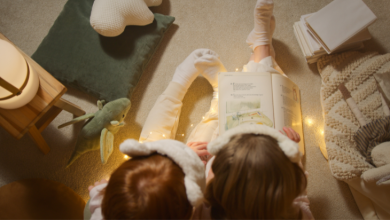How to Teach Kids Grit

How to Teach Kids Grit
Adults know it’s important to push through uncomfortable situations. But we also know it’s not a skill people are born with. “Grit” is learned. But how do you teach something as inherently uncomfortable as emotional stamina to kids? This article guides parents through the process of teaching and living a “gritty” lives so their kids can be more resilient as teens and adults.
Before We Start …
A note to parents before you embark on the journey of teaching grit: Really consider your child’s age. If you’re the parent of an infant, this advice doesn’t even apply. It’s impossible to raise a “gritty” toddler!
The earliest you would want to start teaching simple applications of grit would be 2 years old. Even then, it would be focused on simple tasks like learning to wait or pushing through one unpleasant activity a day. Kids who are old enough to be in preschool and pre-K are the ones who will have the emotional and mental maturity to start benefiting from teachings on grit.
What Is Grit?
The grit we’re talking about isn’t from a Western or the mascot of a Philadelphia sports team.
“Grit is passion and perseverance for very long-term goals,” says psychologist Angela Lee Duckworth. “Grit is having stamina. Grit is sticking with your future, day in, day out, not just for the week, not just for the month, but for years, and working really hard to make that future a reality. Grit is living life like it’s a marathon, not a sprint.”
Duckworth’s research on the topic of grit caught the world’s attention back in 2013 and launched a movement for acquiring a deeper understanding of how grit affects people’s lives. Since then, it’s been the topic of research in all types of professions and disciplines. Her inspiration originated in the classroom, though, and educators have joined in the quest to see if grit can be taught in a school setting.
But can grit be taught at home? Absolutely!
Normalize Discomfort, Failure & Frustration
If grit is the ability to persevere, that means there’s going to be something uncomfortable present to persevere against.
Stamina and grit means getting used to discomfort, failure, and frustration. Those three emotions extinguish stamina the quickest, so embracing discomfort as a pathway to growth is the first huge step in learning how to live with grit.
What this doesn’t mean is signing your 4-year-old up for a half marathon or telling them to “get over” their fear of the dark.
For little ones, the easiest way to start teaching grit is to encourage them to try new things and activities. Learning new things almost always means failure or discomfort, and this is where you as the parent can help them learn the basics of grit. Normalize failure as a part of the learning process, and allow space for frustration when there are setbacks.
Think of teaching grit to a child the same way you would teach them to ride a bike. There’s going to be a lot of failure, probably some tears, but time and practice will produce the result everyone is looking for.
Cultivate a Growth Mindset
Having a growth mindset is believing we can always improve or do better if we take the time to learn from our mistakes and persevere through hardships. This mindset is the bedrock for grit. Without the belief that consistent effort will create positive outcomes, grit completely falls apart.
Here are a few ways you can encourage your child as you work to establish a growth mindset in their minds and in your family’s culture.
- Praise effort over outcome. Even if your child is successful in completing a task or overcoming a challenging situation, fight the urge to praise their talent or celebrate the outcome. Instead, praise them for the effort they put in.
- Teach positive self-talk. Self-talk that’s full of “I can’t” and “what’s the point” keeps a growth mindset from taking route. If you hear your child saying these things, gently offer solutions like, “I can’t yet” and “one day I’ll get this.”
- Setting achievable challenges to build confidence. Git and growth mindset are marathons, not sprints. Help set informal, everyday goals with your child that are just outside of their comfort zone and skill set. Quick wins (especially for kids under the age of 5) are important as you implement the basics of grit.
Find Grit Everywhere
Even as adults, we can look at other people and assume they’ve always been incredible at what they do. That singer could always sing, that athlete was always the best, and that astronaut was born with a spacesuit on.
The truth is that they all started at the bottom. How they got to the top had a lot to do with how much grit they had.
For kids, the idea that they have a say in what they achieve in life may never have entered their mind. Every once in a while, take a few minutes to tell them stories of real people who made a big difference just because they never gave up.
- Micahel Jordan was cut from his high school basketball team. He went on to be one of the most legendary basketball players of all time.
- Walt Disney’s first animation company went bankrupt.
- Albert Einstein struggled in school.
- Dr. Seuss had his first book rejected by 27 different publishers.
- Ed Sheeran played music on city streets as a young teenager.
And those are just a handful of millions and millions of examples you could use. In fact, there’s one particular person whose story of gritty they’d be most interested in …
Parent with Grit
Like so many of the concepts we share on this blog, grit starts with mom and dad. Share stories of how you had to push through and persevere when things got hard. Talk about how it made you feel before, during, and after your challenge. Inspire them with the knowledge that someone they know and love chose to walk the long road when it mattered, even when it was uncomfortable and hard.
Establishing grit in a toddler or preschooler may seem daunting, but don’t try to accomplish too much too fast. Remember, this is a long-term goal with long-term benefits. What you’re doing today is setting a foundation for them to build on later. The results may not seem evident at first, but the work you do today matters tomorrow!





